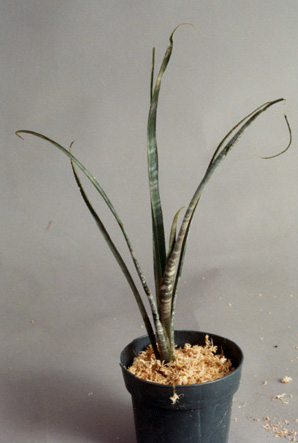A
catalogue of Bromeliads used for various projects by - © Lloyd Godman
This
is a catalogue of bromeliads used by Lloyd godman for his various installations
and photosynthesis projects - the collection of pants he accessed in
New Zealand from 1996 - 2004 was collected from a wide range of sources,
while most were brought from Greens Bromeliads, some were also donated
by the Dunedin Botanical Gardens. Later in 2004 these plants were either
sold or given away with his move to Australia.
Lloyd is at present re-establishing his collection where he now lives
in Melbourne.
A
Lexicon of Bromeliads: A
resource by Lloyd Godman
Blthough Billbergias produce flowers that are shot lived, they are very spectacular. These very hardy plants often have few leaves but they form in such a manner as to produce tall tubular structu res that hold deep reservoirs of water. These leaves are often dusted with silver bands, or the plant may take on an over all silver dusting. They like average to warm temperatures (60-85 degrees C, 16-30 degrees F), but some will tolerate temperatures near freezing for short periods. Many grow well as epiphytes on trees.
Plants are marked NZ for those collected in New Zealand - or Aust - for the new plants collected since coming to Australia
|
Billbergia
meyeri
|
|
|

|
Species/Cultivar: Species
Seed parent plant:
Pollen Parent Plant:
Taxonomic rank: Species
Hybridizer:
Native distribution: This plant comes from the dry, barren regions of Mato Grosso, Minas Geras, and Sao Paulo, Brazil and eastern Bolivia, often growing on palm "boots" at altitudes of 500 to 2,200 ft
Habit: It is a tall thin, tube like plant with gray brown, channelled leaves mottled profusely with peltate scales.
Leaf shape:
Leaf cross section:
Pigmentation:
Spines:
Trichomes:
Axis:
Floral Bracts:
Rachis:
Bract on Stipe:
Primary Bract:
Internode:
Stipe:
Peduncle Bract:
Peduncle:
Inflorescence: The long pendulous inflorescence has large, bright pink bracts and greenish petals tipped with blue. The petals curl back like a spring when the flowers open, exposing the long green stamens. The following day the petals uncurl and straighten out. The plant needs wintre care.
Flowers:
Petals:
Sepals:
Stamens:
Anther:
Stigma:
Pistil:
Pollen:
Roots:
Stalons:
Off sets:
Pollination:
Seed:
Germination:
Cultivation:
Fertilization:
Collection: NZ
|
|